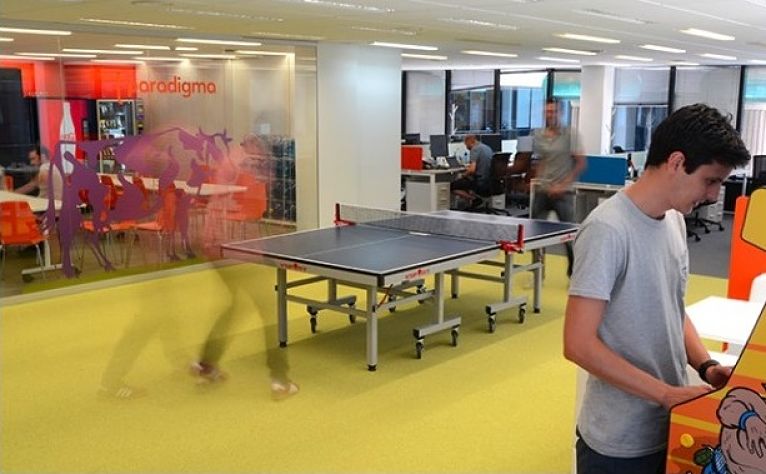In 2014 I traveled to Africa where I could see wild animals roam in freedom. Lions, gazelles, buffalos, elephants and other species in their natural habitat, where their splendor shines. It was an unforgettable experience that I recommend to lovers of animals, nature and photography.
I might also add that I am not very fond of zoos. Despite their supposed concern for animals, they appear as "collections" of animals and not homes.
Situations where animals are confined in very bad conditions are too frequent (e.g. zoo of Almendralejo or the last polar bear of Argentina). But even under the best conditions, it is impossible to duplicate or imitate the natural habitat in which they live.
Captivity prevents animals from developing many of their behaviors that for them are innate and vital such as running, flying, hunting, climbing or being accompanied by other species as companions.
Many times these zoos are built with the best of intentions, however we do not realize that the model is erroneous. The natural habitat of animals for thousands of years is nature, and if you deprive them of freedom, even with the best care, it is simply not the same.
But apart from this, which is perfectly debatable, the relevant fact that I want to highlight and that I think is not up for debate, is that animals do not behave nor live in the same conditions in the zoo as in nature itself.
There are studies that show that these animals have clear signs of psychological effects derived from captivity, and even in some cases their life expectancy is reduced by half.
For me, this situation is very similar to the one we are currently experiencing in Spain with digitalization, which in many cases does not progress due to the same basic error.

Why are traditional companies unable to innovate? It's not because of a lack of smart people, because these companies have some excellent professionals, who would fit in any digital startup.
Neither is it due to lack of ideas, even though in many cases they do not have a creative environment, sometimes good ideas arise in these environments where there is a very deep knowledge of the business. So what is the problem?
The reason is that these exceptional people do not stand out within these unfavorable environments. Ideas die prematurely because in order for these ideas to become innovative projects, a culture of innovation and an orientation to execution that these companies do not have is required, because they have not been created for it.
Ideas are lost in the waterfall structure and internal obstacles generated by excessive bureaucracy and resistance to change. And this is the main reason why digital profiles do not work within these companies, it is simply not their natural habitat.

The potential of these profiles is based on this culture and the constant interaction with others like them to turn ideas into products and, if you take this away, you will only have downcast lions eating pre-frozen fillets far from their herd.
But then, what should these traditional companies do? How can they take advantage of the potential of digital companies without destroying them? Well, in my opinion they have two complementary options.
The first is to initiate a cultural transformation supported by a digital company, which will help them make a profound renovation of their organizational model, culture, as well as streamlining their internal processes.
A change process must be sponsored by top management and that is not easy, so it takes some time to obtain relevant results.
There is no magical solution, but it is necessary to create a customized solution within the particular context of each company and sector, which affects the change of mentality required before tackling any solution.
This is not about creating SQUADS and papering the walls of post-its, but we must understand the degree of maturity of each company before beginning to address the changes, for example we cannot expect to embark on the task of lightening the hierarchy without first going through a product portfolio management in an agile way.
Therefore, the agile principles of transparency, inspection and adaptation must be applied in the execution of the transformation itself, focusing on obtaining quick wins that help overcome the resistance to change.
The second option is to rely on a digital company that serves as an external innovation laboratory, a "Digital Study" in an uncontaminated external environment, that takes the ideas of a traditional company and makes them a reality in a digital context.
A context where interference is minimized, opportunities for knowledge sharing are promoted (synergies between teams, training, communities of practice, etc.) and the efficiency and value of work is maximized.

In this way traditional companies can use digital companies to give a boost to their business, difficult to get from within their own internal organization.
The key is to align these studies around business objectives of traditional companies, so that they maintain control over the results.
For that, it is necessary to innovate in relationship models so that digital native companies function as a digital extension of companies from any sector. Models where traditional companies go as far as having their own space in the offices of these digital companies, to give joint form to innovative projects from this creative environment. Examples of the success of a model similar to this one are Vodafone’s Lowi; or BBVA’s Datio.
Comments are moderated and will only be visible if they add to the discussion in a constructive way. If you disagree with a point, please, be polite.




Tell us what you think.